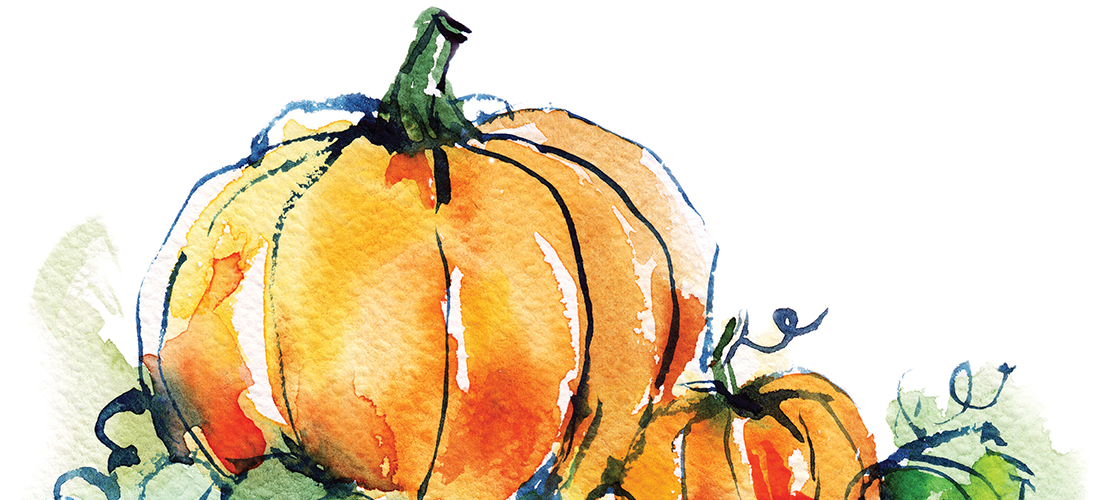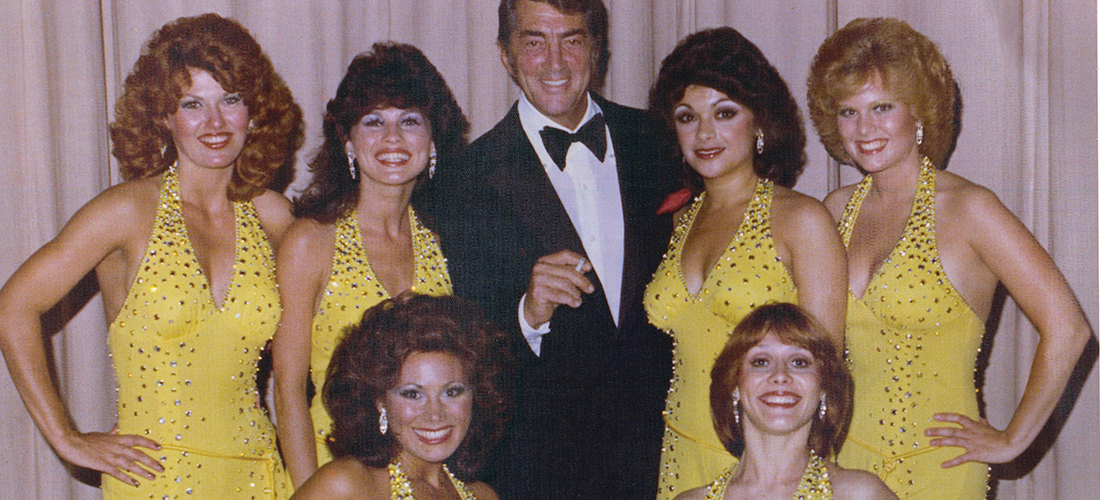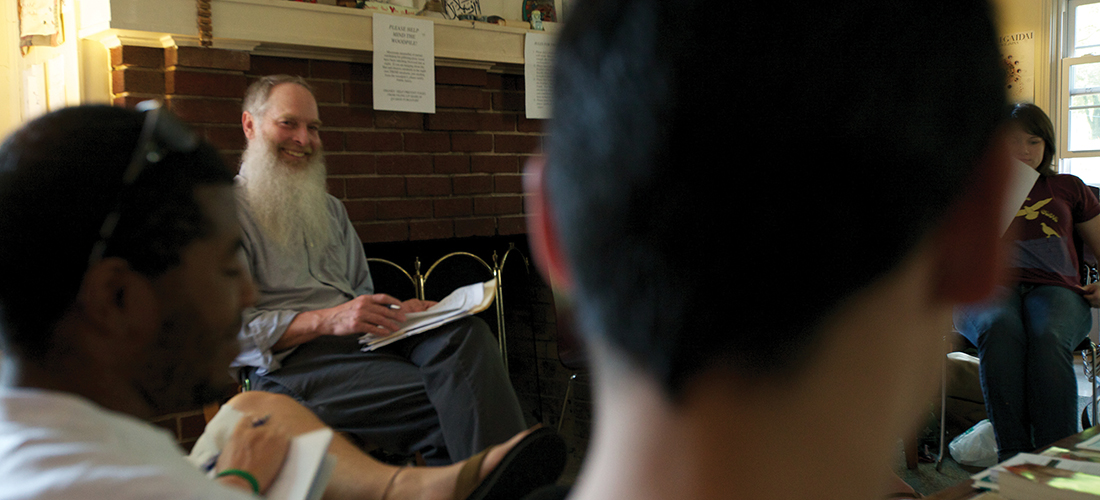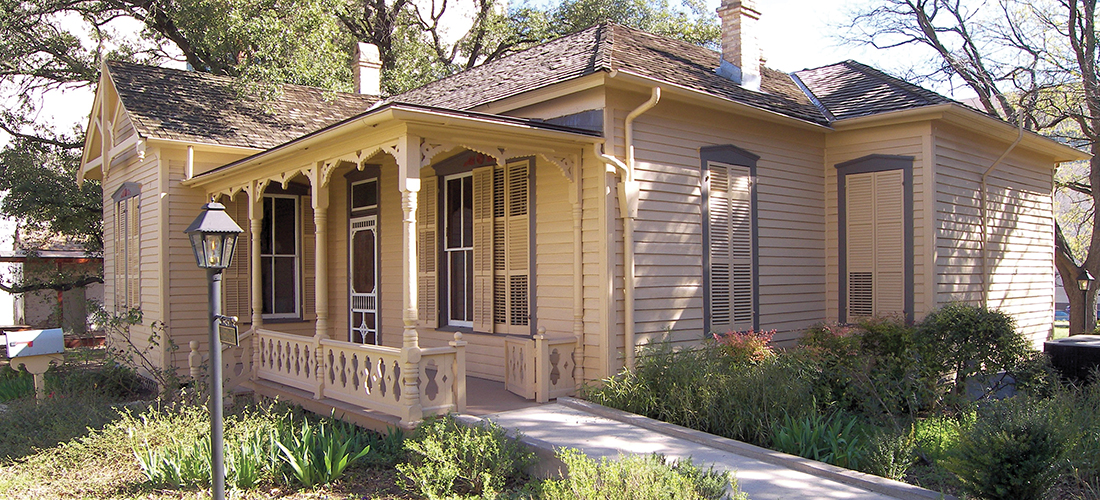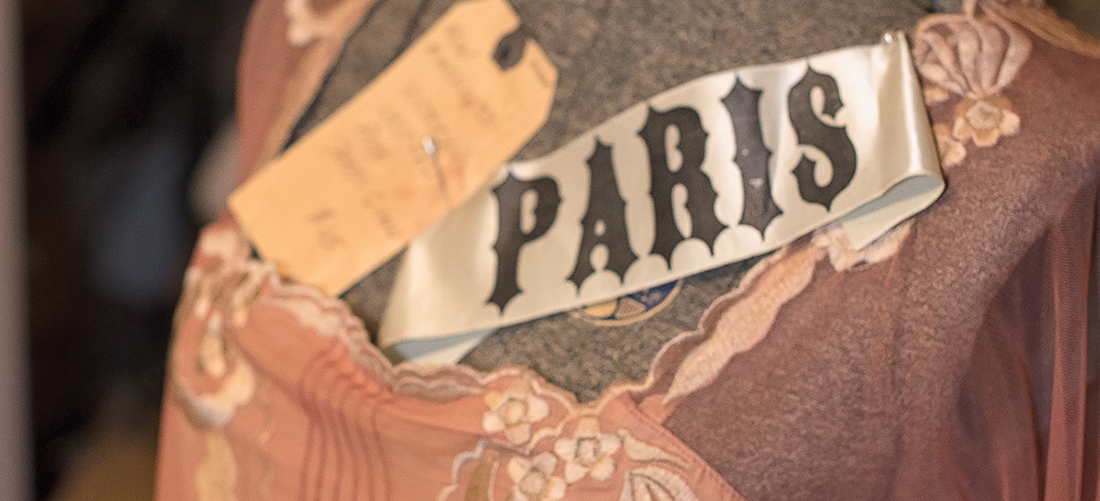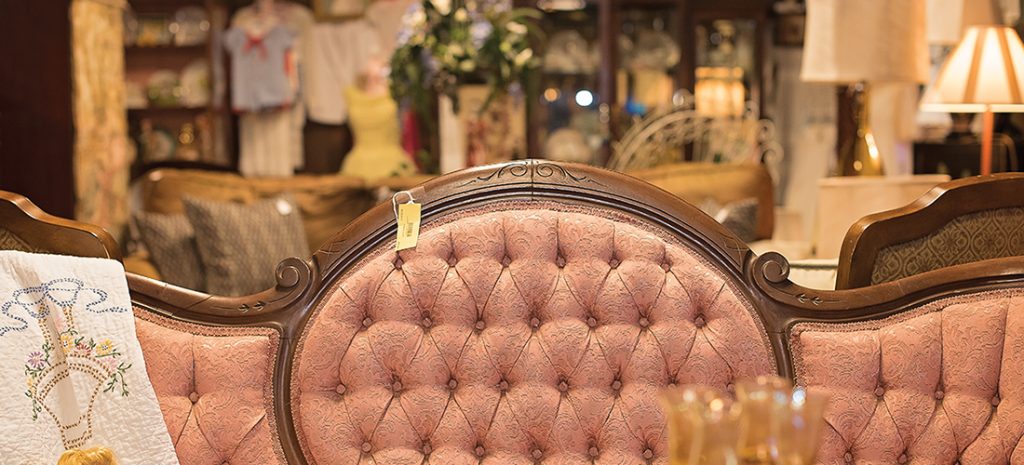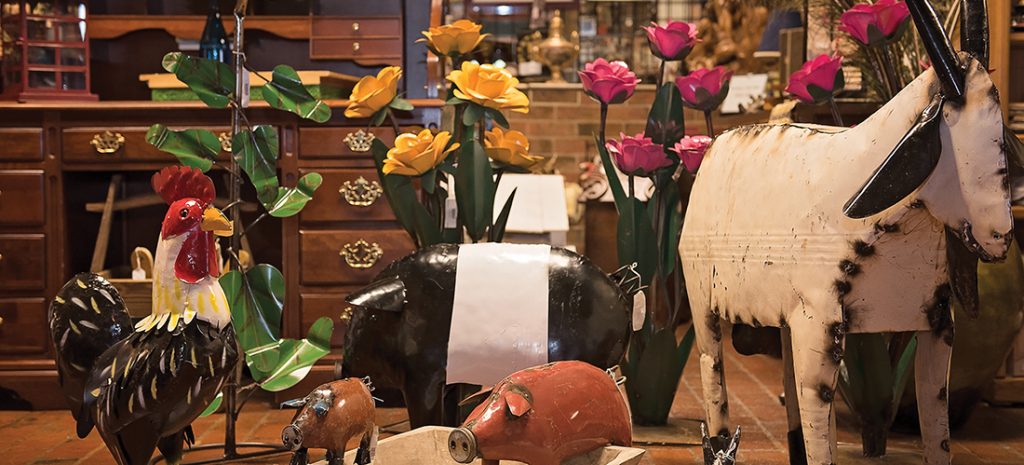On the Street Where you Live
A Saturday stroll on one
of Greensboro’s most
eclectic retail thoroughfares
Story & Illustration by Robin Sutton Anders
Donít be fooled by its dreamy-sounding moniker: Spring Garden Street doesn’t entirely live up to its name.
Starting downtown, the street runs about 5 miles, lazing through UNCG’s shady, green campus, hustling past a dense stretch of shops and businesses, and then zipping over to Market Street, where it morphs into MuirsChapel Road. Sure, the stretch from downtown through campus is plenty lush, but any sort of perennial-lined utopia “Spring Garden” might suggest is far outweighed by the next section of road crisscrossed with powerlines and flanked by college housing.
Let’s take a walk along the 1-mile hustle and bustle made up of some of Greensboro’s most vibrant shops, pubs and restaurants between Aycock Street and Scott Avenue — more of a raggedy gathering of wildflowers than Biltmore-worthy grounds We’ll peek inside a few of these small businesses thriving (some more than twenty years) because of their owners’ ingenuity and commitment to family and community. We won’t have time to wander through each of the treasures sheltered by this stretch of Spring Garden, but you’ll see enough to schedule your return trip.
Jack’s Corner Mediterranean Deli,
1601 Spring Garden Street
If you’re hungry, let’s start at the corner of Aycock and Spring Garden, where Jack himself is likely to greet you from behind the counter. Back in 1991, 17-year-old Jack Bishara was a Smith High School senior who dreaded the thought of leaving for college. The feeling was mutual for his stay-at-home mom, Najwah, who’d already kissed Jack’s three older siblings goodbye.
So the two hatched a plan. They road-tripped it up to Detroit and down to Houston for a crash course on the restaurant biz from family entrepreneurs. Then they put Najwah’s cooking skills to new use on a slice of family land a stone’s throw from UNCG. “We had no idea what we were doing, and the Mediterranean food we wanted to serve wasn’t popular in this area,” Jack says. “Hence the name Jack’s Corner.”
Starting with just a few Greek and Arabic staples — gyros, hummus, falafel, tabouli —alongside American favorites like turkey clubs and burgers, Jack’s Corner met with instant success. In fact, Najwah’s family recipes turned out to be such a hit, she and Jack added “Mediterranean Deli” to the name two years later. Jack’s 27-year-old niece, Zeena, now joins her uncle and grandmother behind the counter. “All our food is homemade, and we use local ingredients when we can,” Zeena says. “It’s what we’ve been making forever. We like to share in the hospitality.”
The Artery Gallery, 1711 Spring Garden Street
You’d expect a wall of frame samples in a store specializing in custom framing. But nobody expects the quantity — and quality — David Thomas and Esia Ackley offer at The Artery, a frame shop David opened in a small pink house more than twenty years ago. Any wall not decked with local artists’ originals is plastered with corner frame samples in every material imaginable.
The 3,000-plus collection comes in handy if a customer needs a quick turnaround or has an unusual request. “You can come in with a kid’s drawing or an antique that needs to be hand-sewn on archival board. It doesn’t matter if your project is monetarily valuable or sentimental, we give everything the same attention and care,” Esia says.
At the Ritz Costumes, 1831 Spring Garden Street
Halloween is obviously a bustling time for patrons of At the Ritz Costumes, aka the “world’s largest closet.” But it doesn’t compare to the steady demand for costumes inspired by the 1970s, says Bob Smithey, the shop’s official Costume Guru, who runs the shop alongside founding owner and Costume Goddess Fay McPherson-Nelson. “You wouldn’t believe how many people come in here looking for bell bottoms,” he says, remembering a day a few years back when Christmas fell on a Saturday. “Somebody came in on Christmas Day looking for a ’70s-themed costume to wear to a party that night.”
Whether their customers want a Great Gatsby–style flapper dress or a tuxedo for a cocktail party, Smithey and McPherson-Nelson always deliver. Stop in and “have a fun dress-up experience,” as the store’s tagline promises. You’ll walk out feeling like a giddy 5-year-old.
John Neal Bookseller, 1833 Spring Garden Street
Open the front door, and you’ll suspect you’ve walked into a small office building — not the world’s preeminent supplier of bookbinding and calligraphy supplies. In fact, the only evidence of John Neal Bookseller’s wares comes from dozens of envelopes Scotch-taped to the walls above the desks of three employees — usually heads-down, filling catalog and online orders.
Each envelope is delicately addressed to John Neal Bookseller, 1833 Spring Garden Street. And every one of them is penned by worldwide Copperplate and Spencerian masters who’ve scripted the letters with iridescent inks, illuminated decorative birds from gold leaf, and lined their envelopes in handmade paper — then mailed their thanks to the Spring Garden supplier committed to supporting their art form.
Ask one of the associates if you can look around in the back rooms. An unfathomable number of pens, markers, sketch paper, brushes, guidebooks, nibs, inks, gouaches and fountain pens await an artist’s studio.
Pages Past, 837 Spring Garden Street
Even before proprietor Roger March opened his Spring Garden storefront twenty years ago, he bought large collections of books and sold them out of his house. Those early years of gathering and sorting at home explain his knack for diving through a box of dusty, leatherbound titles and emerging with a four-leaf clover. Today, his literary treasures with a regional focus on the Civil War, travel and early American history fill floor-to-ceiling shelves, boxes lining the aisles, and four additional storage units.
March has garnered an impressive online following from antiquarian collectors across the country watching his selections and waiting to bid on rare manuscripts. There’s the 1783 book on hydraulics machines autographed by Charles Cotesworth Pinckney, whose signature also appears on the Declaration of Independence; the very first book published in the South during the Civil War, signed by the editor and containing a calligraphed letter from then-N.C. governor and UNC-Chapel Hill president David L. Swain (this one lists for $12,500); and the first American edition of War and Peace.
The Tasting Room,
901 South Chapman Street
If you like wine even a little bit, we’ll duck inside the Tasting Room, a cozy wine bar on the corner of Chapman and Spring Garden where manager Alison Breen is usually behind the bar waiting to help you find your new favorite variety. Since it opened five years ago, the Tasting Room has surprised and delighted customers with a superior selection of reds and whites from all over the world. Breen doesn’t serve food, but customers are welcome to bring it in — Freeman’s across the street has great sandwiches, and the Tasting Room’s sister restaurant next door, 913 Whiskey Bar and Southern Kitchen, will deliver their famous mac and cheese to your table.
“Wine is very personal,” Breen says. “I like to take the time to find out what our customers like and help them through their wine journey.” Through the Tasting Room’s wine club, members receive a bottle of red and white each month, and they’re invited to free tastings every week. “We’ve had people join the club only drinking sweet white wines, and now they’ve branched out and are amazed that they like the biggest, boldest heavy reds out there,” Breen says. “We really do celebrate the exploration.”
Spring Garden Bakery and Coffeehouse, 1932 Spring Garden Street
This coffeehouse gives you its best, every day: Cheerful bakers who love their jobs and proudly offer vegan pumpkin-chocolate chip muffins along with flaky cherry and cheese Danishes. Neighborhood patrons are grateful for a warm place — even on icy weather days, the bakery is open — filled with aromas of freshly baked bread to share with a cup of coffee.
Have a cappuccino and treat yourself to one of baker Larry Clayton’s nutribuns. For the past thirty years, Clayton has been arriving before sunrise to knead the dough for the bakery’s famous, giant whole-wheat buns filled with melted cheddar cheese, sesame and sunflower seeds. Then grab a sugar cookie for the road.
Revolution Cycles, 1907 Spring Garden Street
As Greensboro’s cycling community grows, so does its need for a gathering place where enthusiasts can service their bikes, shop for new and used models, and gather for a drink before and after they finish a race or casual ride. “It’s not just commerce, it’s community,” say the store’s experts/bartenders, who offer their expertise along with ten beers on tap.
Art and Soul, 938 Spring Garden Street
Owner Jenny Stickrath’s new gift shop truly reflects the soul of Spring Garden and its broader community. “I love things that are funky, objects that have flair, and craftspeople who are just doing their thing,” she says, adding that she tries to fill the store with objects made in America with a give-back program, where proceeds go to support causes such as clean water initiatives, fair trade programs for women in Africa or feeding hungry children wherever they are.
Stickrath and her staff work hard to curate a selection of one-of-a-kind gifts and see themselves as their patrons’ personal shoppers. “We’ve created an intimate setting where we can have one-on-one customer relationships. I want people to come here and find the perfect, meaningful gift among our wonderful collection.”
Adelaide’s Vintage Home & Garden, 2000 Spring Garden Street
For now, our tour ends at a charming 1905 Victorian on the corner of Spring Garden and Milton. Whether you need a new dresser or decorating tips, Adelaide Dillon’s little white cottage has what you’re looking for. Each room feels like a page out of a coastal lifestyle magazine, with shabby-chic furniture and breezy, fresh accessories displayed in their element: colorful, painted glasses and pitchers in the kitchen; a white painted farmhouse table accented with a pair of blue benches and vintage linens in the dining room; oversize framed mirrors and vintage paint-by-number art to accessorize the bedroom’s furniture.
No worries if you find the perfect piece that doesn’t match your home’s décor. Dillon will paint it for you — any color you choose. “I love getting to know my customers and their tastes and preferences,” she says. Currently in her third Spring Garden location since she opened Adelaide’s eight years ago, Dillon has witnessed the same patrons as they’ve decorated loft apartments, gotten married and filled their homes with affordable pieces, and shopped for the perfect nursery accessory. OH
Robin Sutton Anders has an affinity for Spring Garden Bakery’s savory treats.

